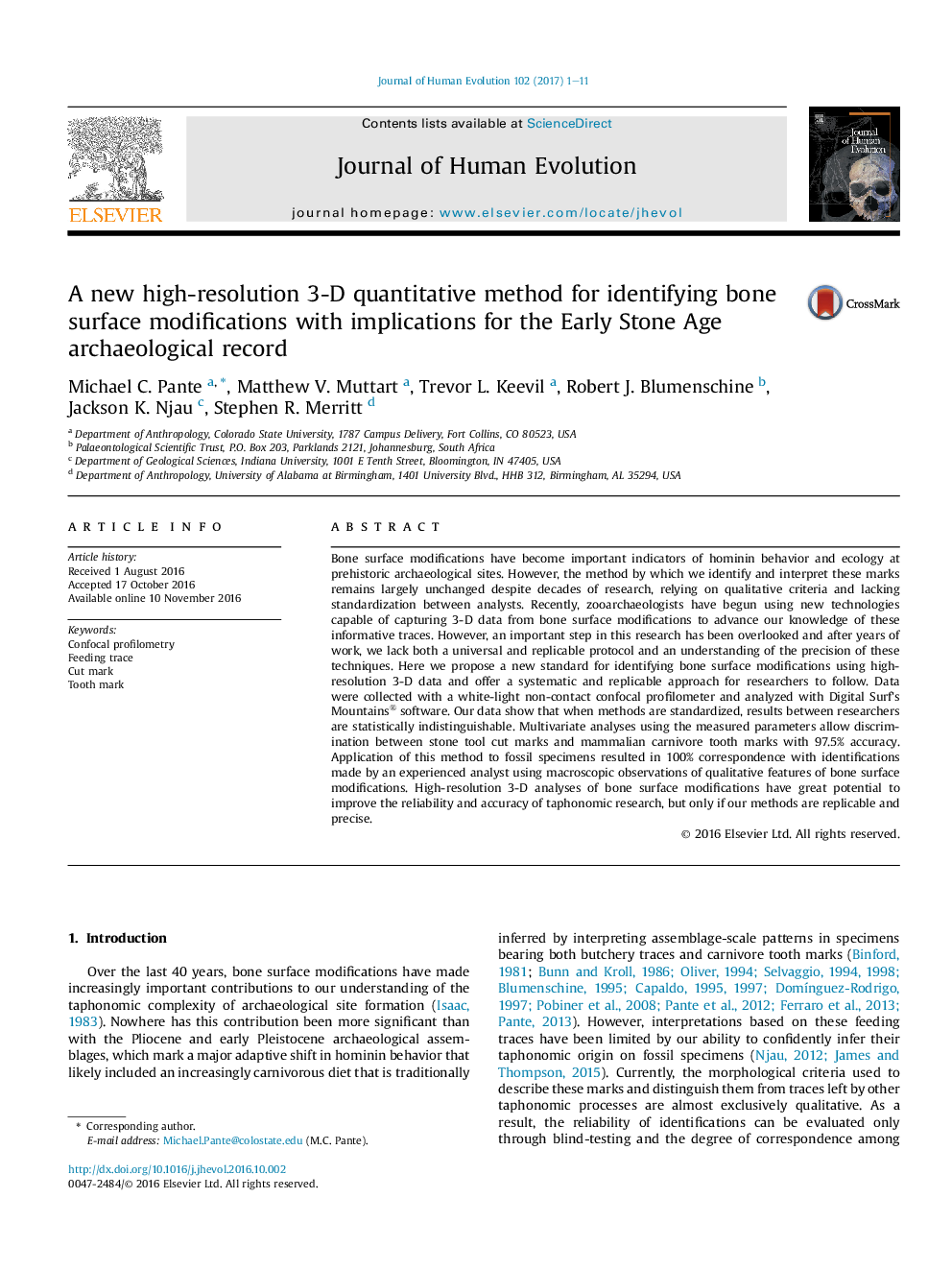| کد مقاله | کد نشریه | سال انتشار | مقاله انگلیسی | نسخه تمام متن |
|---|---|---|---|---|
| 5766852 | 1628147 | 2017 | 11 صفحه PDF | دانلود رایگان |
Bone surface modifications have become important indicators of hominin behavior and ecology at prehistoric archaeological sites. However, the method by which we identify and interpret these marks remains largely unchanged despite decades of research, relying on qualitative criteria and lacking standardization between analysts. Recently, zooarchaeologists have begun using new technologies capable of capturing 3-D data from bone surface modifications to advance our knowledge of these informative traces. However, an important step in this research has been overlooked and after years of work, we lack both a universal and replicable protocol and an understanding of the precision of these techniques. Here we propose a new standard for identifying bone surface modifications using high-resolution 3-D data and offer a systematic and replicable approach for researchers to follow. Data were collected with a white-light non-contact confocal profilometer and analyzed with Digital Surf's Mountains® software. Our data show that when methods are standardized, results between researchers are statistically indistinguishable. Multivariate analyses using the measured parameters allow discrimination between stone tool cut marks and mammalian carnivore tooth marks with 97.5% accuracy. Application of this method to fossil specimens resulted in 100% correspondence with identifications made by an experienced analyst using macroscopic observations of qualitative features of bone surface modifications. High-resolution 3-D analyses of bone surface modifications have great potential to improve the reliability and accuracy of taphonomic research, but only if our methods are replicable and precise.
Journal: Journal of Human Evolution - Volume 102, January 2017, Pages 1-11
